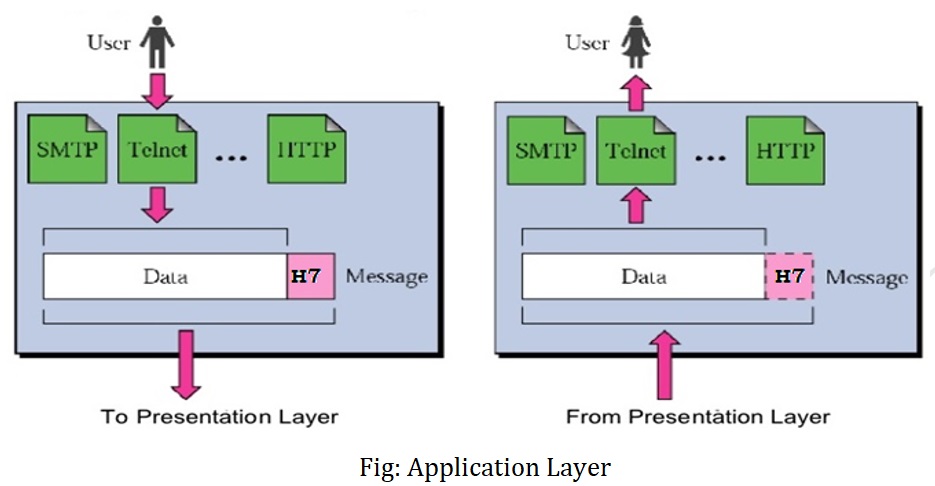COMPUTER NETWORKING, Day -1
Building Blocks of Modern Connectivity: An Introduction to Computer Networking and its Layers
Task - 1: An overview of computer networking, its importance in the DevOps context, and the benefits it offers.
What is Computer Network?
Computer networking is like a digital web that connects devices together, enabling them to share information and work together. It's like a virtual highway system that allows computers to communicate, share files, and access the internet, making collaboration and data exchange possible.
Benefits of computer networking in the DevOps context:
Automation and Efficiency: Networking automation reduces manual effort and ensures consistent deployments.
Scalability and Flexibility: Networking enables efficient resource scaling and workload distribution.
Collaboration and Communication: Networking facilitates teamwork and resource sharing.
Enhanced Security: Networking practices protect data and mitigate security risks.
Rapid Deployment and Time-to-Market: Automated networking speeds up software deployment.
Continuous Improvement: Networking monitoring provides insights for optimization and better user experience.
In summary, computer networking in DevOps enables automation, scalability, collaboration, security, rapid deployment, and continuous improvement.
Task - 2: Discuss the OSI model and its layers, highlighting their functions and interactions.
The International Standards Organization created a model called the Open Systems Interconnection, which allows diverse systems to communicate...
[ISO is the organization. OSI is the model]
Take a look at this picture : )

Seven layers of the OSI model

Layered architecture
The OSI model consists of seven layers (physical, data link, network, transport, session, presentation, and application) that define the functions and interactions involved in data transmission.
Each layer has specific responsibilities and communicates with the layer above and below it, forming a hierarchical structure.
The model allows for interoperability between different systems and machines by defining protocols and standards for communication.
Within a single machine, each layer relies on the services provided by the layer below it, while communication between machines involves peer-to-peer processes at the corresponding layers.
The OSI model provides a comprehensive and flexible framework for networking, enabling the understanding, troubleshooting, and design of efficient network architectures.
Peer to Peer Processes
The interaction between layers in the OSI model

Peer-to-peer processes occur at each layer of the OSI model between corresponding layers on different machines.
These processes communicate using protocols that are specific to each layer and are responsible for the exchange of data and control information.
Peer-to-peer processes enable interoperability between different systems and machines, allowing them to understand and communicate with each other based on the agreed-upon protocols.
Communication between peer-to-peer processes follows a set of rules and conventions defined by the protocols of the respective layers.
The peer-to-peer processes at each layer work collaboratively to ensure that data is transmitted correctly and reliably across the network, facilitating effective communication between different devices and systems.
Let's deep dive into layers of OSI model
Physical Layer: This layer deals with the physical aspects of data transmission. It defines the electrical, mechanical, and physical characteristics of the network, such as cables, connectors, and signaling. Its primary function is to transmit raw bits over the network medium.
Data Link Layer: The data link layer provides error-free transmission of data frames between neighboring nodes. It handles tasks like framing (dividing data into manageable chunks), error detection and correction, and flow control. It also defines protocols for accessing the physical network.

Network Layer: The network layer facilitates the transfer of data packets across multiple networks. It handles addressing, routing, and logical addressing, ensuring that data is delivered to the correct destination across different networks. The IP (Internet Protocol) is a well-known example of a network layer protocol.

Transport Layer: This layer ensures reliable delivery of data between end systems. It breaks down large data segments into smaller packets and handles error recovery, congestion control, and flow control. The most common protocols at this layer are TCP (Transmission Control Protocol) and UDP (User Datagram Protocol).
Session Layer: The session layer establishes, maintains, and terminates connections between applications. It allows applications on different devices to establish a session and exchange data. It also handles session synchronization and checkpointing.
Presentation Layer: The presentation layer is responsible for data representation, ensuring that information is properly formatted, encoded, and encrypted for transmission. It deals with tasks like data compression, encryption, and protocol conversion to ensure that data can be understood by the receiving system.

Application Layer: The application layer is where users interact with the network through various applications. It includes protocols and services for tasks like email, file transfer, web browsing, and remote access. This layer provides an interface for user applications to access the network services.

Tomorrow we will learn about - Network Fundamentals, Protocols, and TCP/IP
Thank you so much for reading.
Follow me on LinkedIn to see interesting posts like this : )

